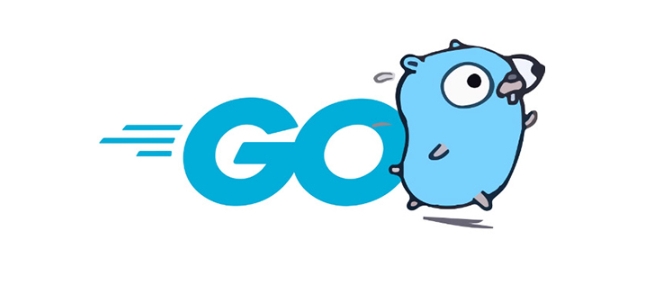io.Reader and io.Writer are the core interfaces for handling I/O operations in Go. 1. io.Reader is used to read bytes from data sources, and commonly used implementations include files, buffers and network connections; 2. io.Writer is used to write bytes to targets, such as files, buffers or network connections; 3. Both are often used together, such as data replication through io.Copy; 4. The standard library provides a variety of packaging tools, such as buffered read and write, restricted read size and multiplexing, etc., to improve flexibility and performance. Mastering them can effectively deal with various I/O scenarios.

It is actually not difficult to understand io.Reader and io.Writer in Go. They are one of the most basic and commonly used interfaces in the Go standard library, and many I/O operations revolve around these two interfaces.

Simply put:
-
io.Readeris the interface for reading data. -
io.Writeris the interface for writing data.
Mastering the usage of these two interfaces can make you more comfortable when handling file, network requests, memory operations and other scenarios.

What is io.Reader?
There is only one method for the io.Reader interface:
Read(p []byte) (n int, err error)
Its function is to read content from a data source and put the read data into the passed byte slice. The return value includes how many bytes were read and possible errors (such as reading to the end).

Common types of implementing this interface are:
-
*os.File -
bytes.Buffer -
http.Request.Body -
net.Conn
For example: Read content from a string
r := strings.NewReader("hello world")
buf := make([]byte, 5)
n, _ := r.Read(buf)
fmt.Println(string(buf[:n])) // Output helloA few points to note:
- The Read method does not read all the data at once, but reads it according to the buffer size you provide.
- You need to loop to call Read until it returns
io.EOFto indicate that it has finished reading. - Don't repeat the wheel yourself. There are many encapsulated functions in the standard library to help you do this, such as
ioutil.ReadAll(r)that can read everything at once.
What is io.Writer?
io.Writer is also very simple, with only one method:
Write(p []byte) (n int, err error)
It is responsible for writing incoming byte slices to a target, such as a file, network connection, or memory buffer.
Common types that implement this interface include:
-
*os.File -
bytes.Buffer -
http.ResponseWriter -
net.Conn
For example: Write content to memory buffer
var buf bytes.Buffer
buf.Write([]byte("hello "))
buf.Write([]byte("world"))
fmt.Println(buf.String()) // Output hello worldNote here:
- The Write method will try to write all data, but it does not guarantee that all of them will be successfully written (although most of the time is no problem).
- If you want to make sure the write is complete, you can check the return value or use a packaged function such as
ioutil.WriteFileto write the file.
How do Reader and Writer work together?
One of Go's design philosophy is combination priority. You will find that many tool functions accept Reader and Writer as parameters.
For example, classic functions for copying data:
io.Copy(dst Writer, src Reader)
It can be used to:
- Copy the file contents to another file
- Write HTTP response body to local file
- Write string content to memory buffer
Example:
r := strings.NewReader("copy this data")
var w bytes.Buffer
io.Copy(&w, r)
fmt.Println(w.String()) // Output copy this dataThis "plug-and-un" design makes code reuse very convenient.
Some tips in actual development
In actual projects, you will often encounter situations where you need to convert or encapsulate Reader and Writer . Here are a few common practices:
- Limit read size : Using
io.LimitReader(r, n)can prevent too much content from being read. - Buffered read and write : use
bufio.Readerorbufio.Writerto improve performance. - Multiplexing : Use
io.MultiWriterto write data to multiple places at the same time (such as log writing to files and consoles). - Empty device : Sometimes you just want to discard the output, you can use
io.Discard, a specialWriter.
These tools are all in the standard library and do not require additional introduction.
Basically that's it. Once you master io.Reader and io.Writer , you will master the core ideas of I/O operations in Go. They seem simple, but when used properly, they can write very flexible and general code.
The above is the detailed content of Go io.Reader and io.Writer explained. For more information, please follow other related articles on the PHP Chinese website!

Hot AI Tools

Undress AI Tool
Undress images for free

Undresser.AI Undress
AI-powered app for creating realistic nude photos

AI Clothes Remover
Online AI tool for removing clothes from photos.

Clothoff.io
AI clothes remover

Video Face Swap
Swap faces in any video effortlessly with our completely free AI face swap tool!

Hot Article

Hot Tools

Notepad++7.3.1
Easy-to-use and free code editor

SublimeText3 Chinese version
Chinese version, very easy to use

Zend Studio 13.0.1
Powerful PHP integrated development environment

Dreamweaver CS6
Visual web development tools

SublimeText3 Mac version
God-level code editing software (SublimeText3)
 What is the standard project layout for a Go application?
Aug 02, 2025 pm 02:31 PM
What is the standard project layout for a Go application?
Aug 02, 2025 pm 02:31 PM
The answer is: Go applications do not have a mandatory project layout, but the community generally adopts a standard structure to improve maintainability and scalability. 1.cmd/ stores the program entrance, each subdirectory corresponds to an executable file, such as cmd/myapp/main.go; 2.internal/ stores private code, cannot be imported by external modules, and is used to encapsulate business logic and services; 3.pkg/ stores publicly reusable libraries for importing other projects; 4.api/ optionally stores OpenAPI, Protobuf and other API definition files; 5.config/, scripts/, and web/ store configuration files, scripts and web resources respectively; 6. The root directory contains go.mod and go.sum
 How do you read a file line by line in Go?
Aug 02, 2025 am 05:17 AM
How do you read a file line by line in Go?
Aug 02, 2025 am 05:17 AM
Using bufio.Scanner is the most common and efficient method in Go to read files line by line, and is suitable for handling scenarios such as large files, log parsing or configuration files. 1. Open the file using os.Open and make sure to close the file via deferfile.Close(). 2. Create a scanner instance through bufio.NewScanner. 3. Call scanner.Scan() in the for loop to read line by line until false is returned to indicate that the end of the file is reached or an error occurs. 4. Use scanner.Text() to get the current line content (excluding newline characters). 5. Check scanner.Err() after the loop is over to catch possible read errors. This method has memory effect
 How do you handle routing in a Go web application?
Aug 02, 2025 am 06:49 AM
How do you handle routing in a Go web application?
Aug 02, 2025 am 06:49 AM
Routing in Go applications depends on project complexity. 1. The standard library net/httpServeMux is suitable for simple applications, without external dependencies and is lightweight, but does not support URL parameters and advanced matching; 2. Third-party routers such as Chi provide middleware, path parameters and nested routing, which is suitable for modular design; 3. Gin has excellent performance, built-in JSON processing and rich functions, which is suitable for APIs and microservices. It should be selected based on whether flexibility, performance or functional integration is required. Small projects use standard libraries, medium and large projects recommend Chi or Gin, and finally achieve smooth expansion from simple to complex.
 How do you parse command-line flags in Go?
Aug 02, 2025 pm 04:24 PM
How do you parse command-line flags in Go?
Aug 02, 2025 pm 04:24 PM
Go's flag package can easily parse command line parameters. 1. Use flag.Type() to define type flags such as strings, integers, and booleans; 2. You can parse flags to variables through flag.TypeVar() to avoid pointer operations; 3. After calling flag.Parse(), use flag.Args() to obtain subsequent positional parameters; 4. Implementing the flag.Value interface can support custom types to meet most simple CLI requirements. Complex scenarios can be replaced by spf13/cobra library.
 How do you use conditional statements like if-else in Go?
Aug 02, 2025 pm 03:16 PM
How do you use conditional statements like if-else in Go?
Aug 02, 2025 pm 03:16 PM
The if-else statement in Go does not require brackets but must use curly braces. It supports initializing variables in if to limit scope. The conditions can be judged through the elseif chain, which is often used for error checking. The combination of variable declaration and conditions can improve the simplicity and security of the code.
 How do you declare constants in Go?
Aug 02, 2025 pm 04:21 PM
How do you declare constants in Go?
Aug 02, 2025 pm 04:21 PM
In Go, constants are declared using the const keyword, and the value cannot be changed, and can be of no type or type; 1. A single constant declaration such as constPi=3.14159; 2. Multiple constant declarations in the block are such as const(Pi=3.14159; Language="Go"; IsCool=true); 3. Explicit type constants such as constSecondsInMinuteint=60; 4. Use iota to generate enumeration values, such as const(Sunday=iota;Monday;Tuesday) will assign values 0, 1, and 2 in sequence, and iota can be used for expressions such as bit operations; constants must determine the value at compile time,
 What does the go run command do?
Aug 03, 2025 am 03:49 AM
What does the go run command do?
Aug 03, 2025 am 03:49 AM
gorun is a command for quickly compiling and executing Go programs. 1. It completes compilation and running in one step, generates temporary executable files and deletes them after the program is finished; 2. It is suitable for independent programs containing main functions, which are easy to develop and test; 3. It supports multi-file operation, and can be executed through gorun*.go or lists all files; 4. It automatically processes dependencies and uses the module system to parse external packages; 5. It is not suitable for libraries or packages, and does not generate persistent binary files. Therefore, it is suitable for rapid testing during scripts, learning and frequent modifications. It is an efficient and concise way of running.
 How to connect to a SQL database in Go?
Aug 03, 2025 am 09:31 AM
How to connect to a SQL database in Go?
Aug 03, 2025 am 09:31 AM
To connect to SQL databases in Go, you need to use the database/sql package and a specific database driver. 1. Import database/sql packages and drivers (such as github.com/go-sql-driver/mysql), note that underscores before the drivers indicate that they are only used for initialization; 2. Use sql.Open("mysql","user:password@tcp(localhost:3306)/dbname") to create a database handle, and call db.Ping() to verify the connection; 3. Use db.Query() to execute query, and db.Exec() to execute






